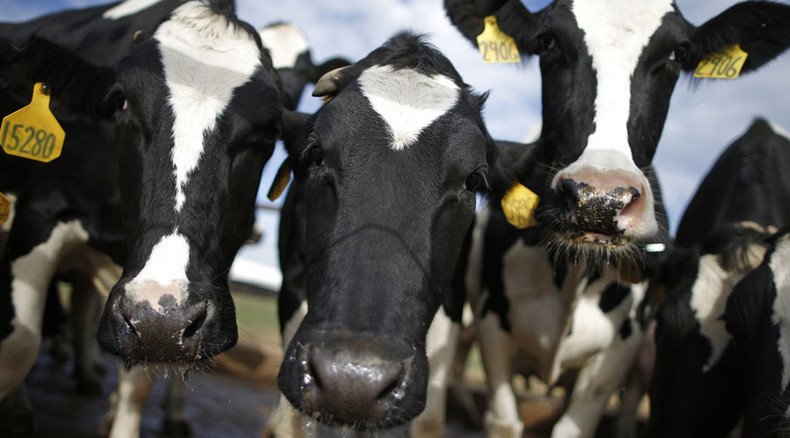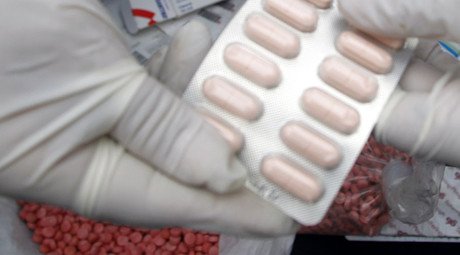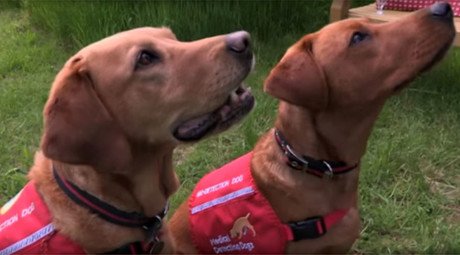Cattle leukemia virus found in milk linked to breast cancer – study

Women exposed to bovine leukemia virus, a routine presence in bulk milk tanks at large dairy farms, are 3.1 times more likely to develop breast cancer than women whose tissue was not subject to the virus, known as BLV, according to a new study.
These odds are higher than those associated with other top breast cancer risks, including obesity and alcohol consumption, according to researchers at the University of California Berkeley.
The research team analyzed breast tissue from 239 women, some who had breast cancer and some who did not. They found that 59 percent of breast cancer cells showed exposure to BLV in their DNA, while cells from women who had not contracted breast cancer only had 29-percent exposure to BLV.
Virus in cattle linked to human #breastcancerhttp://t.co/2Twez5bxuR#cancerpic.twitter.com/WrlaIYQtc3
— UC Berkeley (@UCBerkeley) September 17, 2015The link between BLV – which, while common in dairy and beef cattle, only affects 5 percent of cattle that have the virus – and breast cancer is significant, the researchers said, but not a conclusive cause-effect.
"The association between BLV infection and breast cancer was surprising to many previous reviewers of the study, but it's important to note that our results do not prove that the virus causes cancer," said Dr. Gertrude Buehring, a professor of virology at the University of California Berkeley. "However, this is the most important first step. We still need to confirm that the infection with the virus happened before, not after, breast cancer developed, and if so, how."
READ MORE: DDT exposure in utero raises breast cancer risk 3.7x – study
The same group of researchers reported last year that BLV could be transferred to humans. BLV infects cattle's blood cells and mammary tissue, and was long thought not to be a threat to humans.
"Studies done in the 1970s failed to detect evidence of human infection with BLV," said Buehring. "The tests we have now are more sensitive, but it was still hard to overturn the established dogma that BLV was not transmissible to humans. As a result, there has been little incentive for the cattle industry to set up procedures to contain the spread of the virus."
Tissue analyzed by the research team was donated via the Cooperate Human Tissue Network. The odds of having breast cancer if BLV was present in tissue was 3.1 times higher than if BLV was not present in tissue, the researchers said.
READ MORE: GM bacteria ‘sensors’ could detect cancer, diabetes
"This odds ratio is higher than any of the frequently publicized risk factors for breast cancer, such as obesity, alcohol consumption and use of post-menopausal hormones," said Buehring.
In 2007, the US Department of Agriculture reported that 100 percent of bulk milk tanks at dairy farms with at least 500 cows tested positive for BLV, while 83 percent of operations with less than 100 cows tested positive for BLV.
Buehring said the new research did not posit a direct correlation between BLV exposure and breast cancer. But, if the link does further materialize, there is hope, as vaccines have been developed to counter the Hepatitis B virus -- known to cause liver cancer -- and the human papillomavirus, a cause of cervical and anal cancer.
READ MORE: California EPA mulls labeling Monsanto’s Roundup as being ‘known to cause cancer’
"If BLV were proven to be a cause of breast cancer, it could change the way we currently look at breast cancer control," said Buehring. "It could shift the emphasis to prevention of breast cancer, rather than trying to cure or control it after it has already occurred."
The research team did not identify how BLV infected human tissue. The virus may have been delivered through unpasteurized milk, undercooked meat, or via another human.














